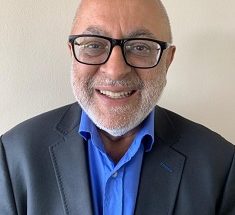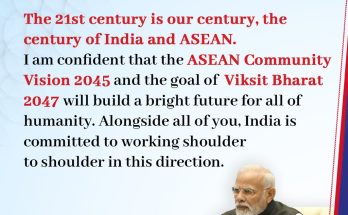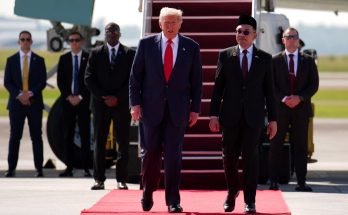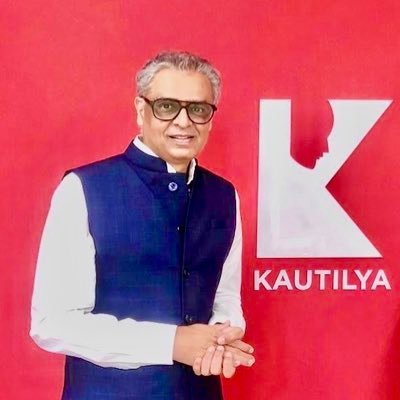
Smart and focused narrative holds the key to winning the battle of perceptions in today’s wired world. Illuminating the importance of messaging during Operation Sindoor, Syed Akbaruddin argues that India needs a standing strategic communications mechanism as part of its national security architecture. India cannot afford to win on the battlefield but fall behind in bandwidth, says the author.
By Syed Akbaruddin
For four days in May, Operation Sindoor dominated global headlines. It was a crisp and controlled military operation. India struck terrorist hubs deep inside Pakistan and targeted select airbases, all without triggering prolonged escalation. But precision in warfare was only part of the equation. What followed was no less consequential. India moved swiftly and assertively. Not to defend a strike, but to shape the strategic terrain it left behind. The goal was to turn the calibrated use of force into a durable diplomatic dividend.
Indian diplomacy is engaging across bilateral ministries, multilateral forums, and plurilateral coalitions. It is attempting to influence how supply chains are built, how risks are assessed, and how trust is distributed across a volatile world. How this phase is managed will determine whether India can blend steel with subtlety, and whether battlefield outcomes can translate into lasting global influence.
Recalibrating Power with Restraint
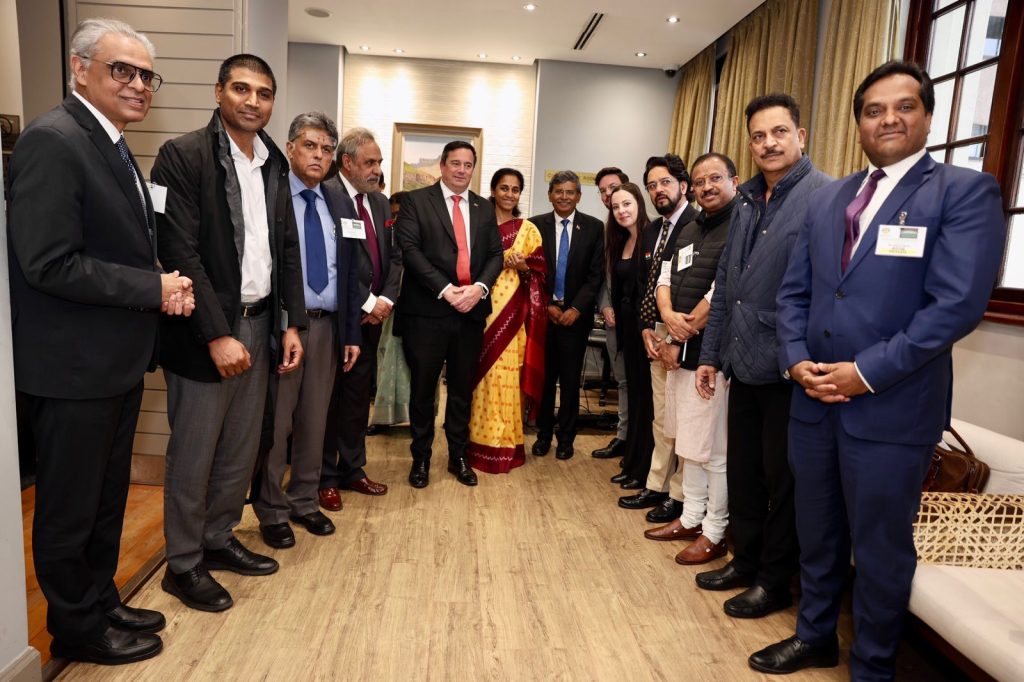 India’s first diplomatic goal was to maintain equilibrium. The military had set a new benchmark in counterterrorism by targeting terrorist infrastructure. Yet no major power condemned India’s cross-border actions. When India placed the Indus Waters Treaty in abeyance, no foreign capital raised objections. Pakistan’s request for closed consultations at the United Nations Security Council yielded no result.
India’s first diplomatic goal was to maintain equilibrium. The military had set a new benchmark in counterterrorism by targeting terrorist infrastructure. Yet no major power condemned India’s cross-border actions. When India placed the Indus Waters Treaty in abeyance, no foreign capital raised objections. Pakistan’s request for closed consultations at the United Nations Security Council yielded no result.
Critics who call this an incomplete success overlook precedent. In 1971, even as Indian troops were liberating Bangladesh, the United Nations General Assembly preemptively adopted a non-binding ceasefire resolution by 104 votes to 11. Military success rarely guarantees immediate diplomatic validation. In global diplomacy, endorsement is earned, not assumed. That India was able to act, explain, and prevent escalation without triggering backlash is no small achievement.
Reframing the Conflict
India’s second priority was narrative. Operation Sindoor had to be understood not as a border flare-up or near war, but as a calibrated doctrine in response to state-enabled terrorism. This was a steep climb. In 2025, terrorism no longer holds the urgency it once did. Ukraine, Gaza, trade and tariff turbulence, climate change, and artificial intelligence dominate the global agenda. Attention is scarce. India needed to work harder to be heard.
Conventional diplomacy moved fast. Over 80 foreign ministries were briefed. Multilateral forums were engaged. But public diplomacy lagged. Misinformation about Indian losses spread unchecked for crucial hours. While rebuttals were issued, the first-mover advantage was lost. In a world ruled by digital narratives, delay becomes a strategic liability.
A New Approach: Democratic Diplomacy
Faced with that gap, India innovated. It sent seven multi-party delegations comprising over 50 parliamentarians to 33 countries. These delegations briefed governments, think tanks, and media on the logic and legality of Sindoor. The goal was simple: expand understanding, neutralise distortion, and add credibility to India’s voice.
This format resonated across ideologically diverse capitals. The presence of ruling and opposition leaders speaking in unison was powerful. As a member of one such delegation, I saw this firsthand. In Cairo, a seasoned Egyptian journalist summed it up over coffee: “Your case is strong. But why did it take so long to tell it?” That question lingers. In today’s world, perception often outpaces precision. Storytelling is no longer an accessory to statecraft. It is a core function of it.
India should not let this effort become episodic. A permanent Parliamentary Diplomacy Forum, active in both peace and crisis, can help preempt doubt and deepen trust over time.
The Next Frontier
India needs a standing strategic communications mechanism as part of its national security architecture. It should monitor hostile narratives in real time, deploy verified information rapidly, and empower Indian missions and ministries to speak with alignment and agility.
This is not about spin. It is about sovereignty. India cannot afford to win on the battlefield but fall behind in bandwidth. The world will not interpret silence in India’s favour. In the information age, clarity is deterrence.
Artificial intelligence enables the viral spread of synthetic narratives, often faster than facts. India must adapt by integrating verification units, outreach cells, and capacity-building modules across its diplomatic corps and key strategic ministries.
India should also lay the groundwork for a loose international caucus on counter-terrorism. This could be an issue-based coalition of countries willing to publicly support counter-terror strategies, rather than an alliance. The Friends of R2P (Responsibility to Protect) model offers precedent. Operation Sindoor showed that support cannot be assumed. It must be organised. This is not about internationalising the India-Pakistan conflict, but about building consensus on global responses to terrorism. If framed carefully, it could turn passive sympathy into active solidarity.
Trade Diplomacy as Reassurance
India’s third objective was economic signalling. Avoiding a quagmire was essential to preserve India’s image as a stable investment destination and focused rising power. It responded not just with speeches, but with speed.
Since the Pahalgam attack, India moved quickly. It completed a free trade agreement with the United Kingdom, accelerated talks with the European Union, deepened engagement with the United States, and began new negotiations with Chile and New Zealand. Each effort serves dual goals: economic gain and strategic reassurance.
India was sending a message. It was not withdrawing from the world after conflict but was opening further. Its markets were stable. Its governance was coherent. Its policies were predictable. For investors wary of spillovers, that message has been received. The result is resilience in capital flows, no dip in confidence, and a steady recalibration of India’s economic reliability.
Momentum Beyond the Region
India has refused to let Sindoor define its diplomatic focus. Prime Minister Modi participated in G7 Outreach in Canada and the BRICS Summit in Brazil. He reiterated India’s commitment to global equity and digital public goods. With the G20 Summit approaching in Johannesburg, India remains an active voice in shaping global rules, not just reacting to regional events.
Prime Minister Modi’s visits to countries like Cyprus, Croatia, Ghana, Namibia, Argentina, and Trinidad and Tobago, many of which have not hosted an Indian Prime Minister in decades, underscore a larger point. India may have acted with force nearer home, but its diplomatic focus remains firmly global.
Frictions That Must Be Faced
This is not to claim an unbroken string of victories.
The episode reinforced a longstanding Indian understanding. In India-Pakistan crises, even strategic partners like Washington and Moscow prioritize de-escalation over endorsement. This is not a failure of diplomacy. It reflects the nature of international politics. It affirms why India has long pursued strategic autonomy not as ideology, but as insurance.
China’s backing of Pakistan was evident. At the Shanghai Cooperation Organisation Defence Ministers meeting in Qingdao, language on the Pahalgam attack was blocked by Islamabad with Beijing’s support. India responded by ensuring there was no outcome declaration. The SCO, once cooperative, is now shaped by hard alignments and Indian engagement in it will remain troublesome.
Turkey’s role added friction. Ankara amplified Pakistan’s messaging at the Organisation of Islamic Cooperation and reportedly supplied drones and military equipment. India responded with calibrated firmness. It deepened engagement with regional partners like Greece, Cyprus, and Armenia, while excluding Turkish companies from procurement and terminating select contracts. This divergence will grow.
There were also avoidable silences. None of the multi-party delegations visited South Asian neighbours. That absence was noticed. China continues to probe groupings and alignments in India’s periphery. Neighbours are watching with quiet calculation, measuring India’s assertiveness against its attentiveness. India’s strength must be matched by strategic empathy. Neighbours feel the tremors of confrontation too. They must not be left to interpret silence as disengagement. Regional reassurance, through bilateral outreach or BIMSTEC activation, must follow.
A Doctrine Takes Shape
Operation Sindoor marked more than a military operation. It marked the emergence of a doctrine. One that strikes when provoked, de-escalates with control, and re-engages with credibility.
But doctrines are not only declared. They are built. They require diplomatic scaffolding, trust networks, narrative strength, and institutional memory. India’s conduct after Sindoor suggests those foundations are forming. It has demonstrated resolve without recklessness. It has explained its actions without apology. It has moved quickly in diplomacy, trade, and public engagement. And it has innovated in ways that have impressed both partners and sceptics.
Deterrence That Resonates
Operation Sindoor was about deterrence. What followed was about resonance. India succeeded not only in avoiding criticism but also in expanding engagement. It showed it could act decisively and return swiftly to the business of addressing global issues.
But there is still distance to travel. In diplomacy, facts rarely speak for themselves. They must be framed, repeated, and believed. Clarity must accompany force. Perception must travel with policy.
India’s missiles struck with precision. Its diplomacy must now do the same. To convert deterrence into durable influence, India must reach far, strike clearly, and land with conviction.
(Syed Akbaruddin is former Permanent Representative of India to the UN and currently dean Kautilya School of Public Policy, Hyderabad).
This article has been published in Special Edition of India and the World on Operation Sindoor.
Syed Akbaruddin
Author Profile
- India Writes Network (www.indiawrites.org) is an emerging think tank and a media-publishing company focused on international affairs & the India Story. Centre for Global India Insights is the research arm of India Writes Network. To subscribe to India and the World, write to editor@indiawrites.org. A venture of TGII Media Private Limited, a leading media, publishing and consultancy company, IWN has carved a niche for balanced and exhaustive reporting and analysis of international affairs. Eminent personalities, politicians, diplomats, authors, strategy gurus and news-makers have contributed to India Writes Network, as also “India and the World,” a magazine focused on global affairs.
Latest entries
 India and the WorldNovember 26, 2025G20@20: Africa’s Moment – The Once and Future World Order
India and the WorldNovember 26, 2025G20@20: Africa’s Moment – The Once and Future World Order DiplomacyOctober 4, 2025UNGA Resolution 2758 Must Not Be Distorted, One-China Principle Brooks No Challenge
DiplomacyOctober 4, 2025UNGA Resolution 2758 Must Not Be Distorted, One-China Principle Brooks No Challenge India and the WorldJuly 26, 2025MPs, diplomats laud Operation Sindoor, call for national unity to combat Pakistan-sponsored terror
India and the WorldJuly 26, 2025MPs, diplomats laud Operation Sindoor, call for national unity to combat Pakistan-sponsored terror India and the WorldJuly 25, 2025When Fire Ends, Diplomacy Begins
India and the WorldJuly 25, 2025When Fire Ends, Diplomacy Begins





